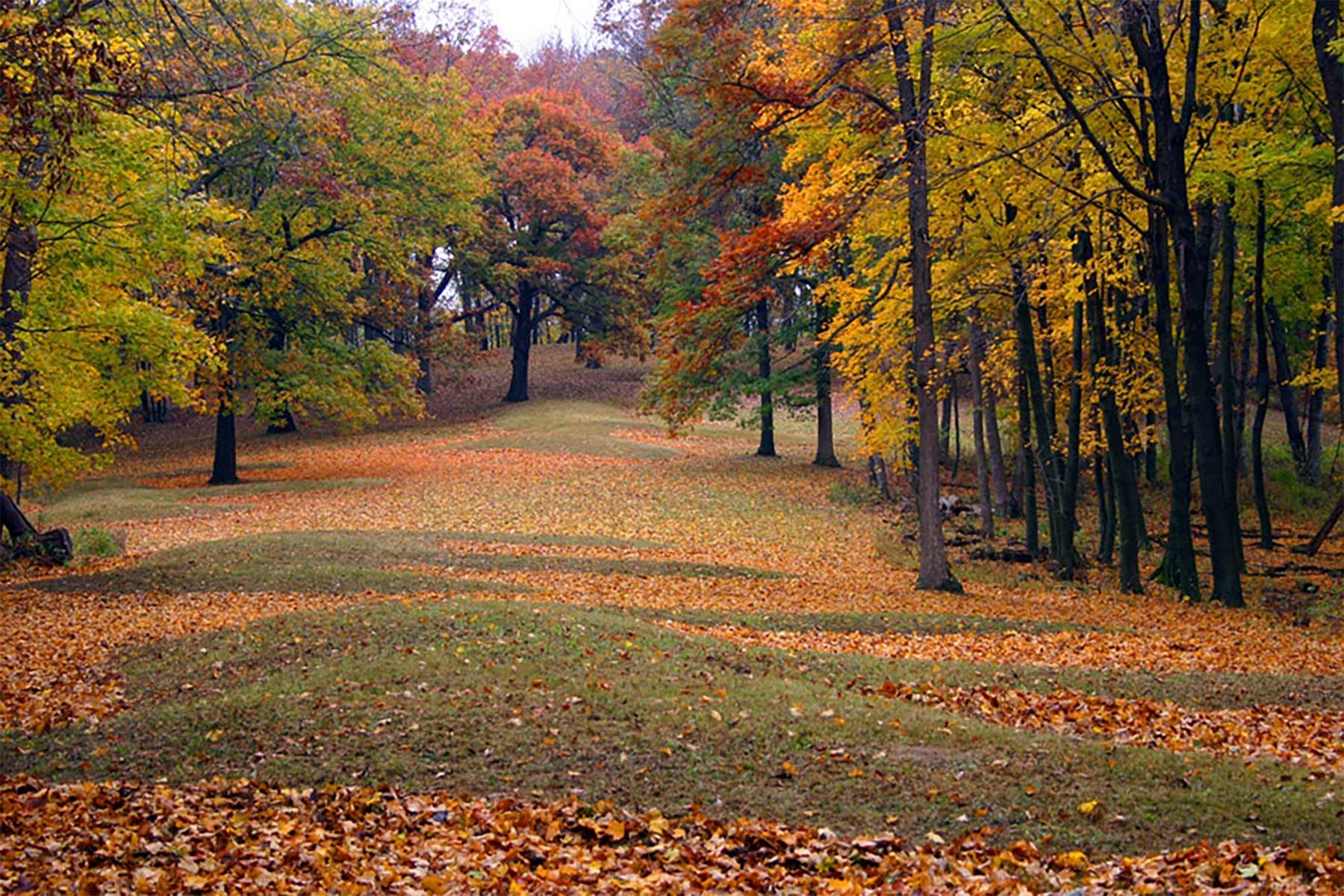
Article Summary: Iowa National Parks
Iowa National Parks! We’ve got four incredible national park sites for you to see on your next visit to the Hawkeye state.
Iowa National Parks includes national monuments, historic sites, heavenly trails and so much more.
I’ve been to so many of these amazing places since retiring from teaching in 2018. Did I mention that I taught history? I spent a lifetime teaching about the history behind these momentous sites. Then I got to see them firsthand. And now I’m sharing the stories of these incredible places with you. It doesn’t get any better than that!
We’re going to give you four reasons why you’ll want to make Iowa your next vacation destination.
To be clear, these are national park sites (as in managed by the National Park Service) but they are not capital letter National Parks. There are only 63 of those (so far).
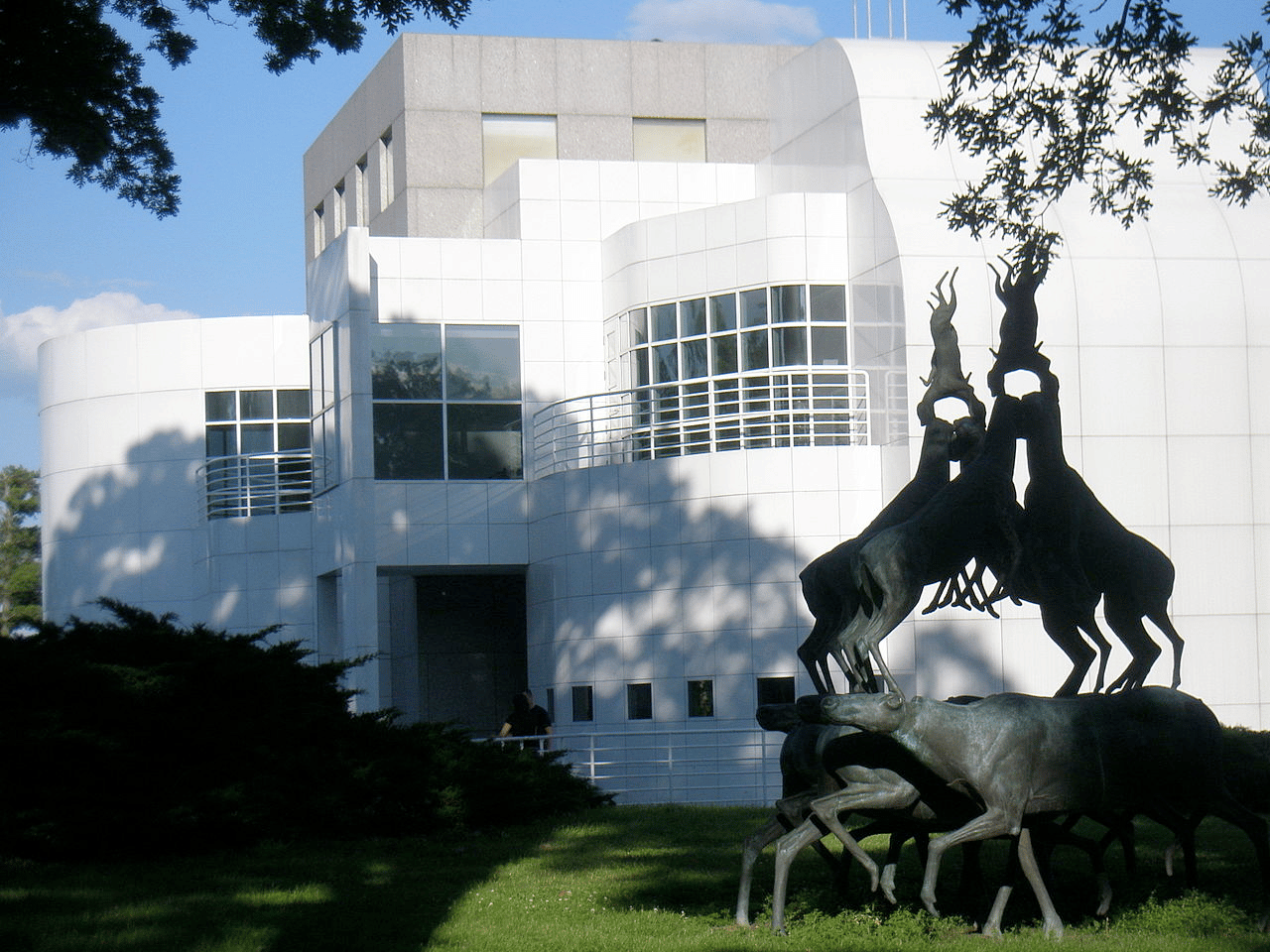
So, What Is A National Park?
We get asked that question a lot because there’s a difference between a “national park” and a “national park site.” To help you understand that difference you might want to check out our article titled: What Is A National Park Really?
If you’re planning a trip to the Hawkeye State then one book that I highly recommend is: GREATER THAN A TOURIST-IOWA USA: 50 Travel Tips from a Local by Sharon Rubel.
Are you ready? Let’s dive in!
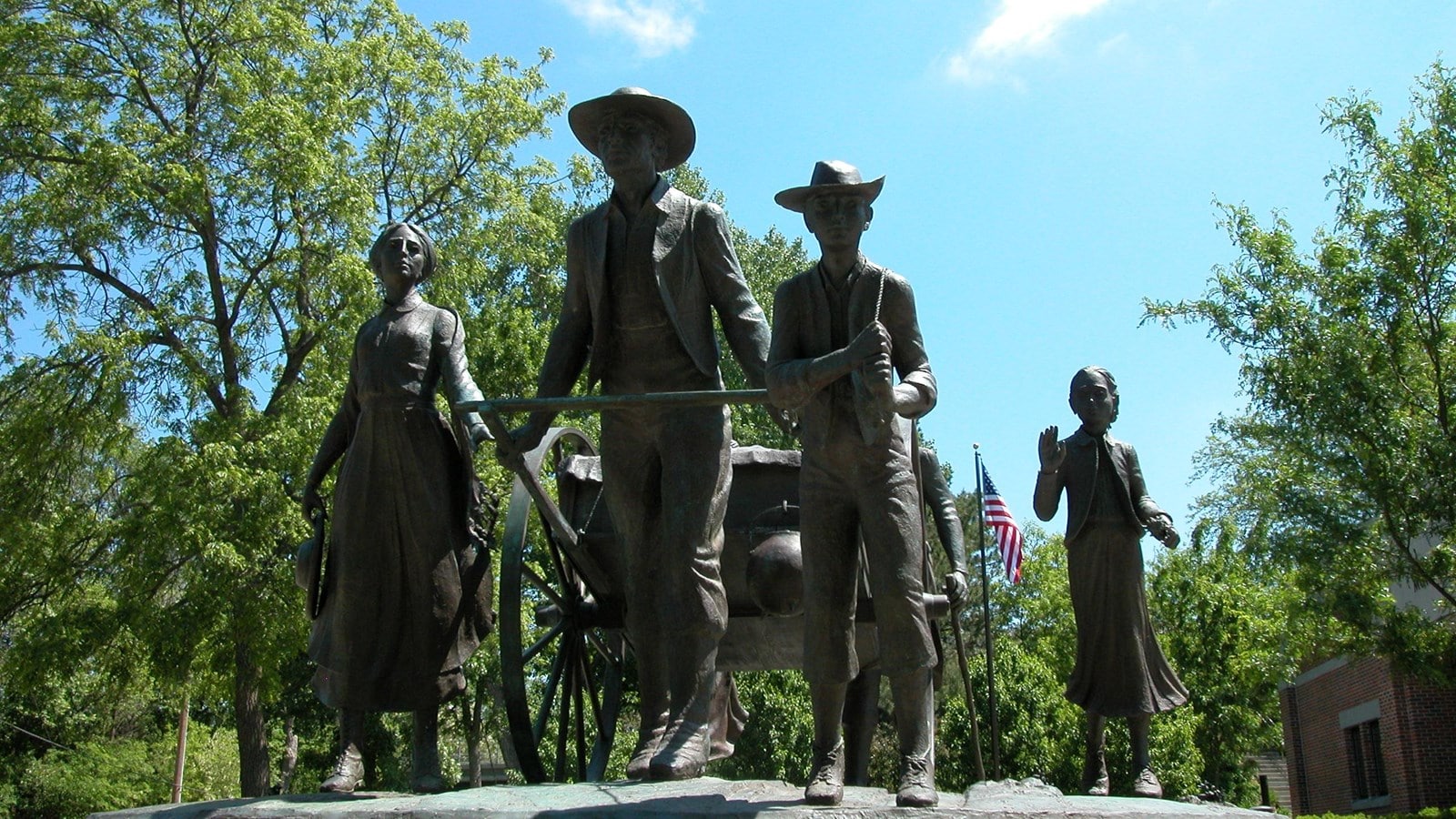
Table Of Contents: Iowa National Parks
Iowa National Parks
Iowa National Parks
1. Effigy Mounds National Historic Site
Iowa National Parks includes some amazing historical sites such as the Effigy Mounds National Monument.
The Effigy Mounds National Monument is a fascinating look at an ancient Native American site. It’s a sacred plot built by native Americans on mounds in Iowa, Illinois, Wisconsin and Minnesota.
Mounds are considered ceremonial or sacred sites. These prehistoric mounds date back to sometime between 500 B.C. and 1300 A.D. The monument includes 20 culturally associated Native American tribes.
These incredible mounds of earth were built in the shapes of birds, bear, deer, bison, lynx, turtle, panther or water spirit are the most common image. One amazing group of these mounds has 10 bears and three birds, a formation archaeologists call the Marching Bears.
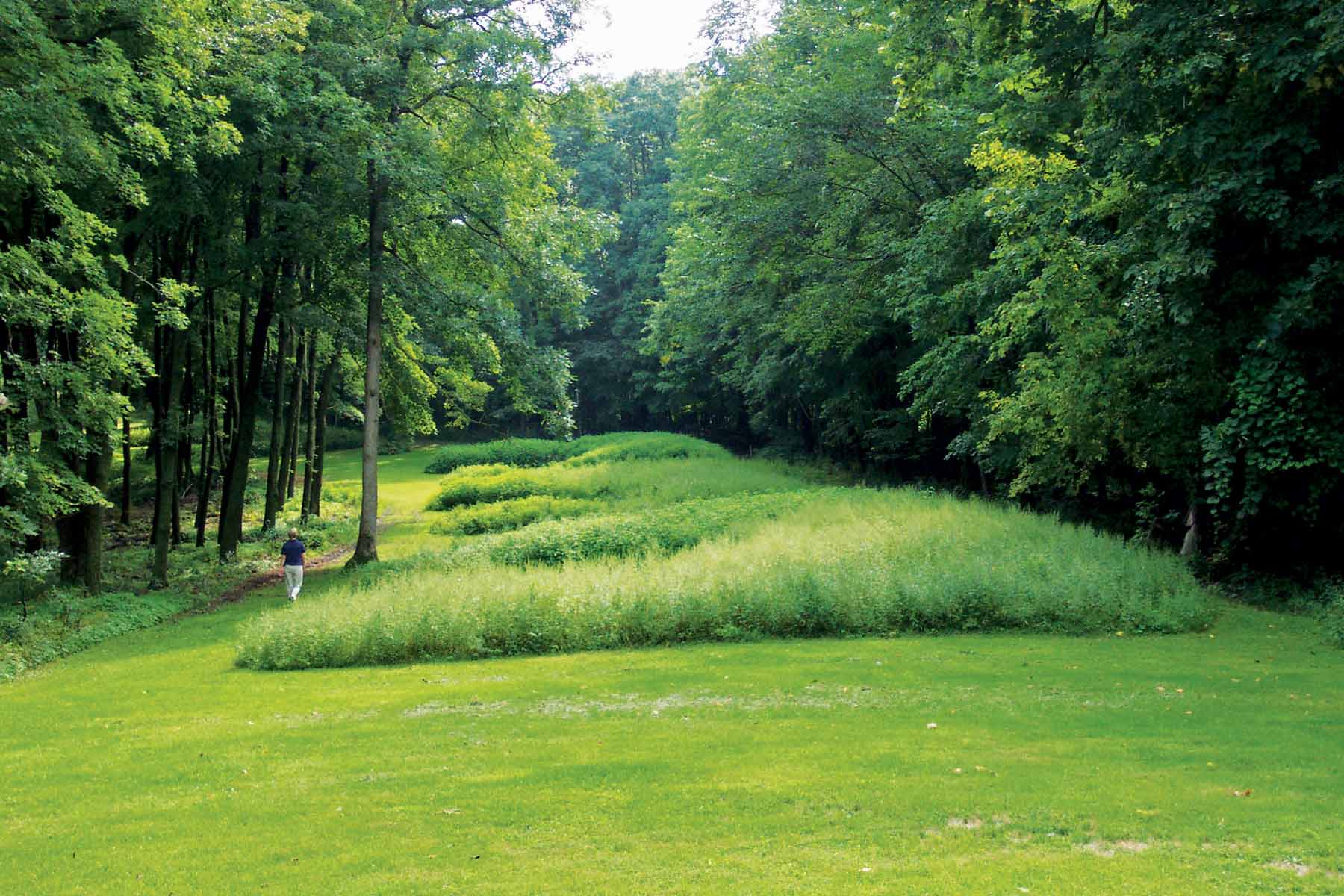
Incredible Hiking Trails
You can explore this incredible site. There are 14 miles of trails throughout this wooded park.
Hiking trails take you through heavily wooded areas and to a lookout point above the scenic river. If you visit during the winter keep an eye out for nesting bald eagles as they perch above the river looking for food.
During the fall the brilliant autumn foliage offers a beautiful example of nature’s magnificence There are scenic roads surrounding the area which provide an amazing view of a idyllic rural paradise. It’s no wonder people have loved coming here for thousands of years.
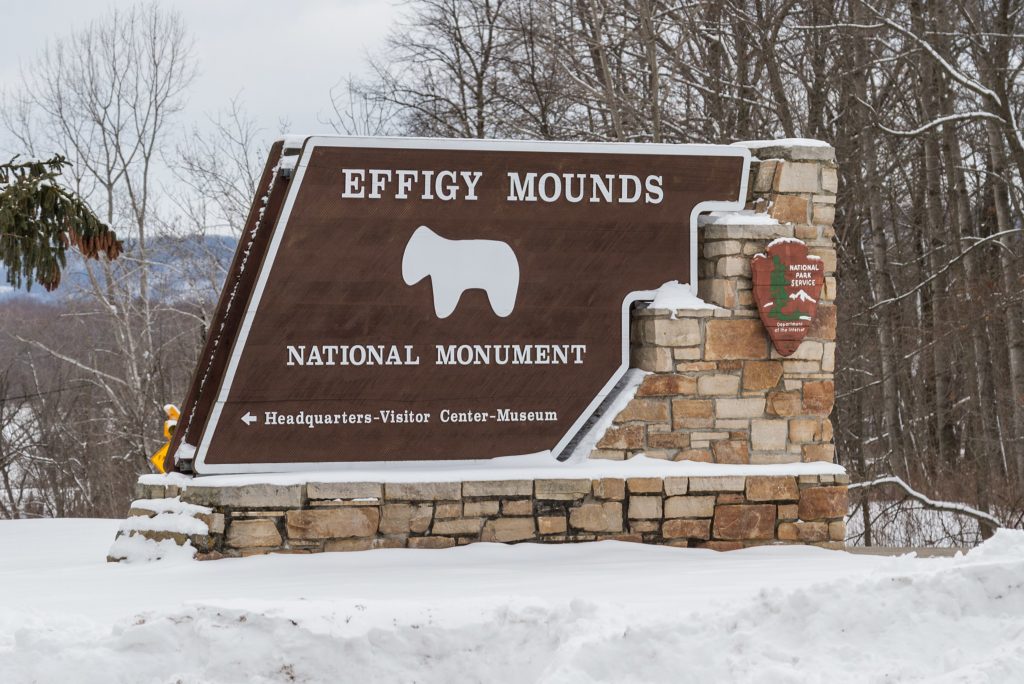
2. Herbert Hoover National Historic Site
Of course Iowa National Parks also features presidential history. And this includes a place which commemorates the 31st President of the United States – Herbert Hoover.
The National Park Service was originally created in 1916 and one of its earliest supporters was none other than President Herbert Hoover.
Hoover had a love for the outdoors. He had moved from Iowa to Oregon at the age of eleven. He spent much of his childhood horseback-riding, swimming, and—his particular favorite—fishing.
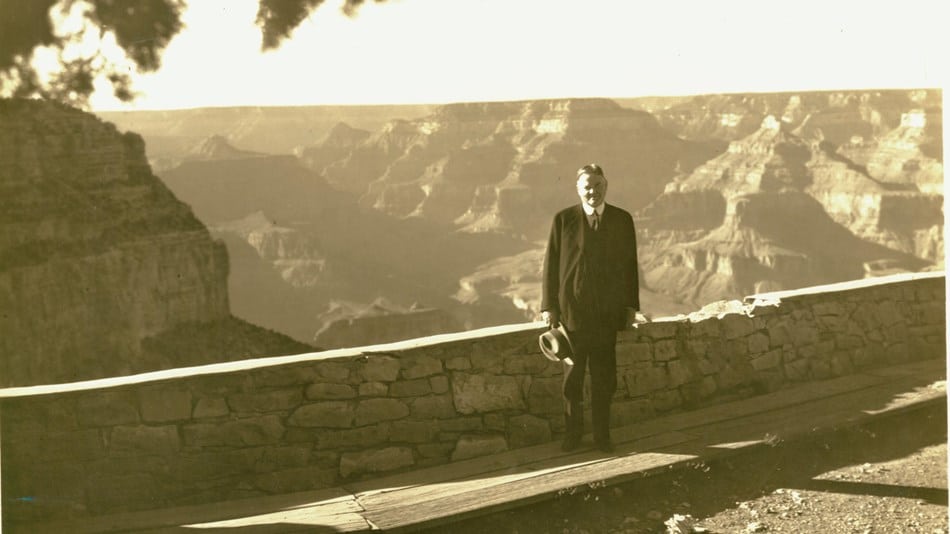
The NPCA President Who Became U.S. President
Just five years after the creation of the National Parks Conservation Association (NPCA), a rising politician took over the presidency of the fledgling organization. He would be the only one who would be able to create national park sites with the stroke of a pen.
Herbert Hoover was chosen as president of NPCA in 1924. He held this position while also serving as President Calvin Coolidge’s Secretary of Commerce.
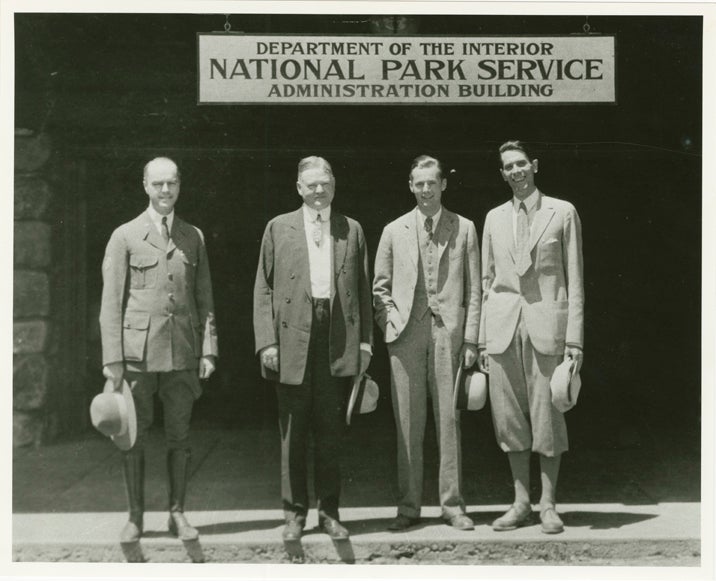
He Expanded The Scope & Size Of The National Park Service
During Hoover’s presidency, appropriations for park operations increased by 70 percent. He also expanded the size of the National Park System by 40 percent.
Hoover used his power under the Antiquities Act to establish national monuments at Arches, Death Valley, Saguaro, Great Sand Dunes and Black Canyon of the Gunnison National Parks.
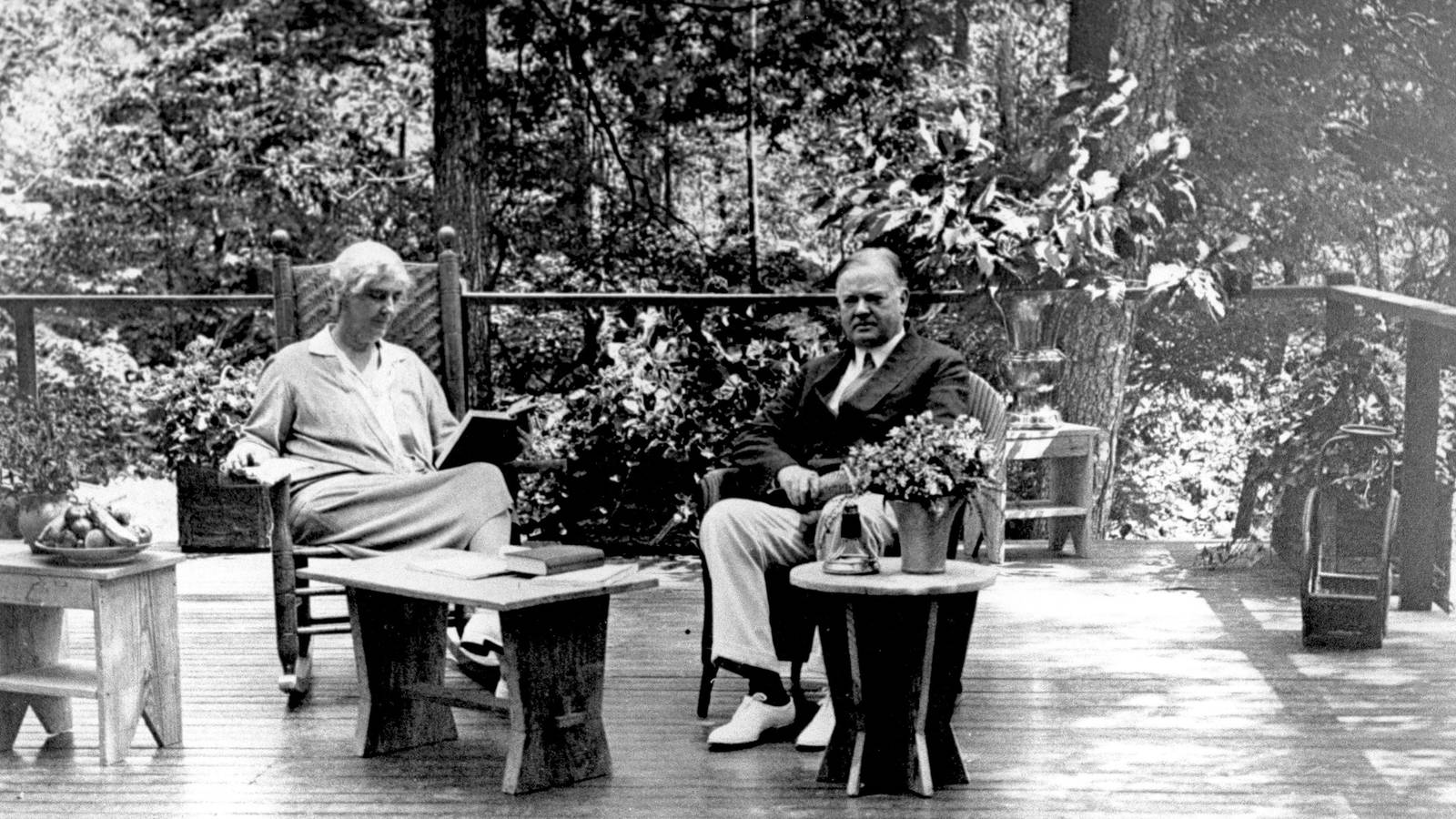
Learn More About America’s 31st President
To learn more about a fascinating yet controversial president, I recommend the following books:
- Herbert Hoover: A Life by Glen Jeansonne
- Herbert Hoover in the White House: The Ordeal of the Presidency by Charles Rappleye
- The Memoirs of Herbert Hoover: The Great Depression 1929-1941 by Herbert Hoover
Things To Do At The Site
You should set aside at least a half a day as there are various things to do and see at the Herbert Hoover National Historic Site.
I always recommend that first-timers begin at the Visitor Center. While you’re there check out the 12-minute film about the life and times of America’s 31st president.
Check Out The Birthplace Cottage Of Herbert Hoover
Visitors can take a self-guided walk of the grounds and historic buildings. You can see the birthplace cottage which was a typical starter home for a young late 19th century family.
Antique furnishings represent common household items of a simply furnished two room rural home. Herbert Hoover referred to his birthplace cottage as “physical proof of the unbounded opportunity of American life.”
This cottage was built by Hoover’s father. Its two rooms were designed for a family of five which certainly taught the future president the value of thriftiness.
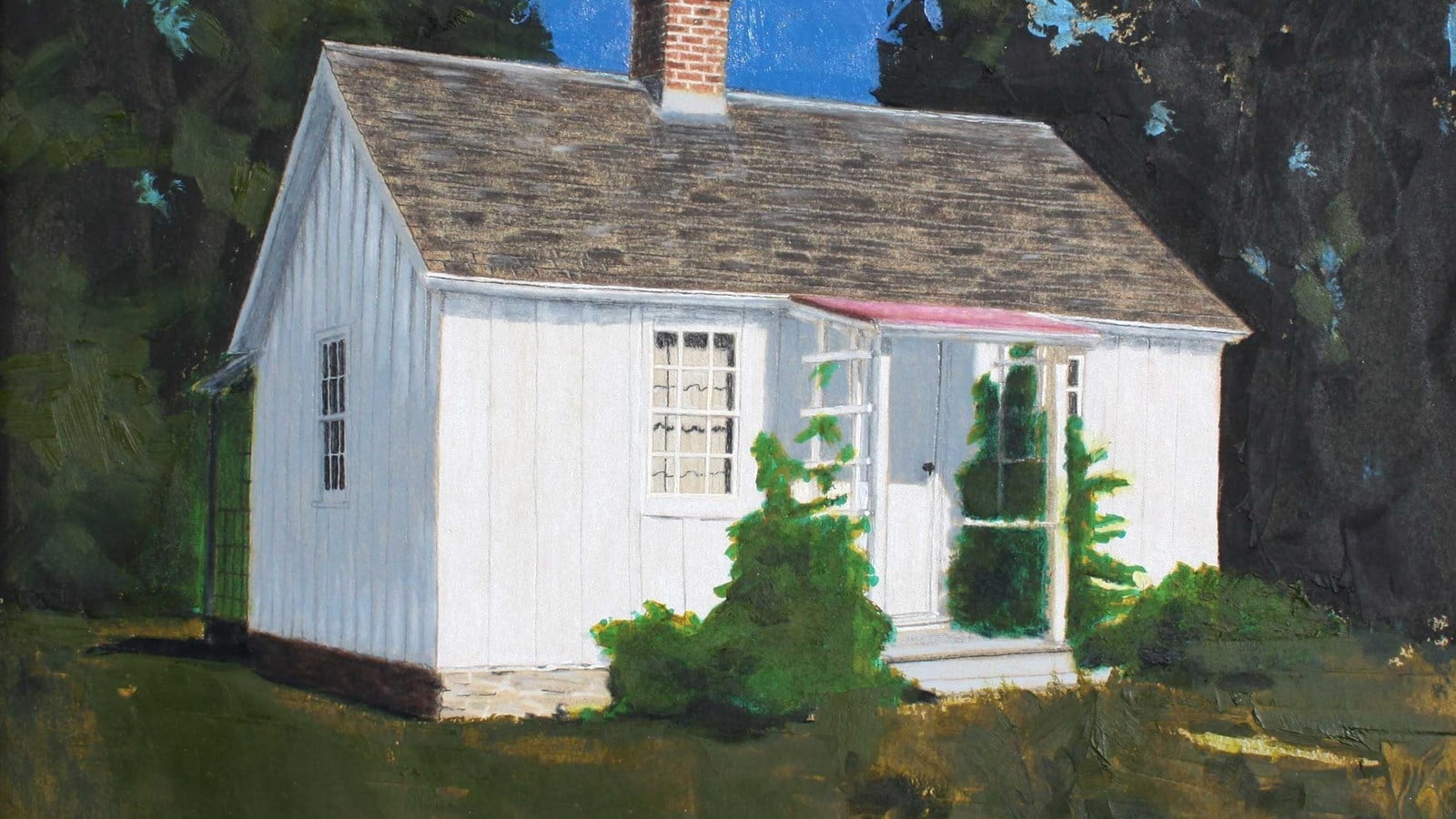
Schoolhouse & Blacksmith Shop
Visiting the Herbert Hoover National Historic Site is like stepping into a time machine. You are transported back to a 19th century world where you can see a one-room schoolhouse much like the one in which Hoover was educated.
Hoover’s father, Jesse, was a blacksmith. Visitors can see a reproduction of a blacksmith shop circa 1857. It’s based on the sketches of Herbert’s older brother Theodore, from his recollections of what their father’s shop looked like.
While there you’ll see a working forge, anvil, and a rack filled with tools of the trade.
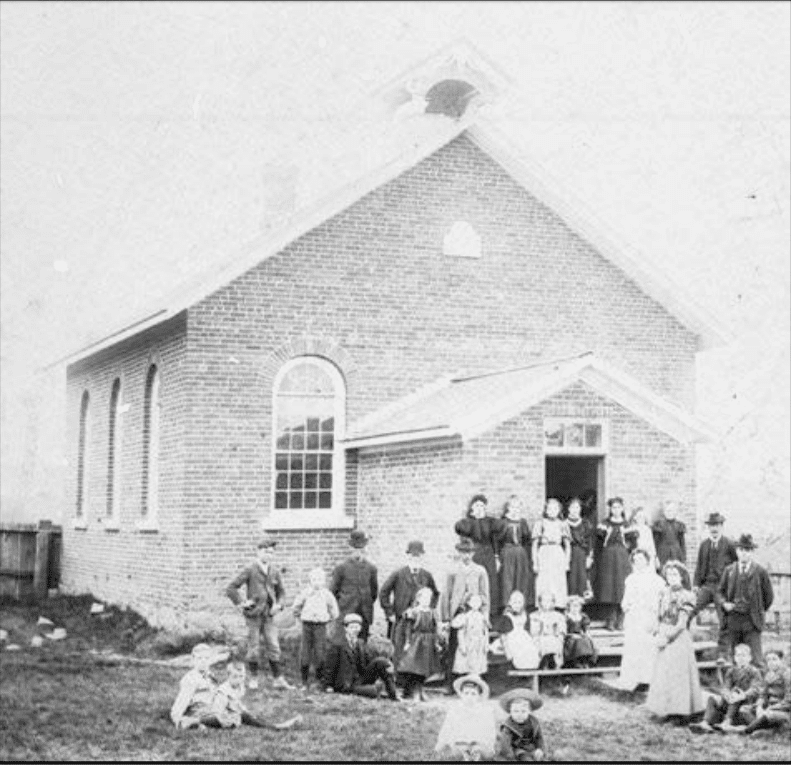
Presidential Library & Museum
The Herbert Hoover Presidential Library and Museum contains some fascinating exhibits chronicling the life and times of the president who presided over the worst economic calamity in our nation’s history.
If you’re interested in learning more about our 31st president then I also recommend reading Hoover: An Extraordinary Life in Extraordinary Times by Kenneth Whyte.
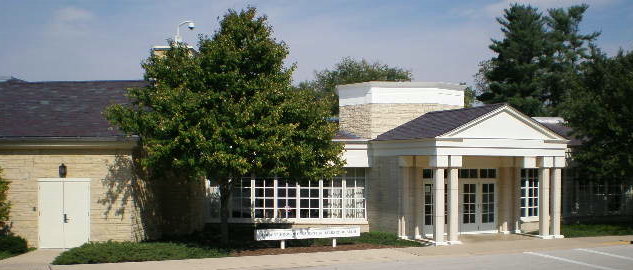
More Iowa National Parks
3. Lewis & Clark National Historic Trail
Iowa National Parks also features one of history’s legendary trails.
The Lewis and Clark National Scenic Trail (LCNST) is a 3,700-mile long trail that follows the historic route of the Lewis and Clark Expedition of 1804-1806.
The trail passes through 11 states, including Missouri, Illinois, Iowa, Kansas, Nebraska, South Dakota, North Dakota, Montana, Idaho, Oregon and Washington, and it is one of the longest National Scenic Trails in the United States.

An Idea Which Began In The 1960s
The idea for the LCNST began in the early 1960s, when a group of individuals and organizations, including the National Park Service (NPS), began advocating for the creation of a trail that would commemorate the Lewis and Clark Expedition and highlight the natural, cultural, and historical resources of the western United States.
After years of planning and development, the LCNST was officially established as a National Scenic Trail in 1978 by the Lewis and Clark National Historic Trail Designation Act. The trail is managed by the NPS in partnership with other federal and state agencies, as well as private organizations and individuals.

Recreational Activities Along The Trail
Today, the LCNST offers a wide range of recreational opportunities, including hiking, camping, and boating. It passes through a variety of landscapes, including forests, prairies, wetlands, and mountains, and it offers visitors the opportunity to experience the unique natural and cultural resources of the western United States.
The trail also passes through many historic sites, such as the historic towns, forts, and battlefields of the Lewis and Clark Expedition, as well as many National Parks, Forests and Wildlife Refuges.
It’s not yet completed and is still under development, but many sections of the trail are open to the public, and the NPS continue to work to complete the trail and connect the existing segments, making it accessible to even more people.
The trail offers a unique opportunity for people to retrace the steps of the Lewis and Clark Expedition and to experience the same landscapes and rivers that they encountered on their journey.
The Historic Trail In Iowa | Iowa National Parks
In Sioux City, Iowa, near the intersection of South Dakota, Nebraska, and Iowa, stands the Sergeant Floyd River Museum and Welcome Center.
The museum is nestled inside the retired M.V. Sergeant Floyd, which was a boat once used by the United States Army Corps of Engineers. It was named after Charles Floyd of Kentucky. He was one of the members of the Lewis and Clark expedition. (Source: National Park Service)
The museum has some fascinating exhibits on the history of transportation and the Lewis & Clark Expedition.
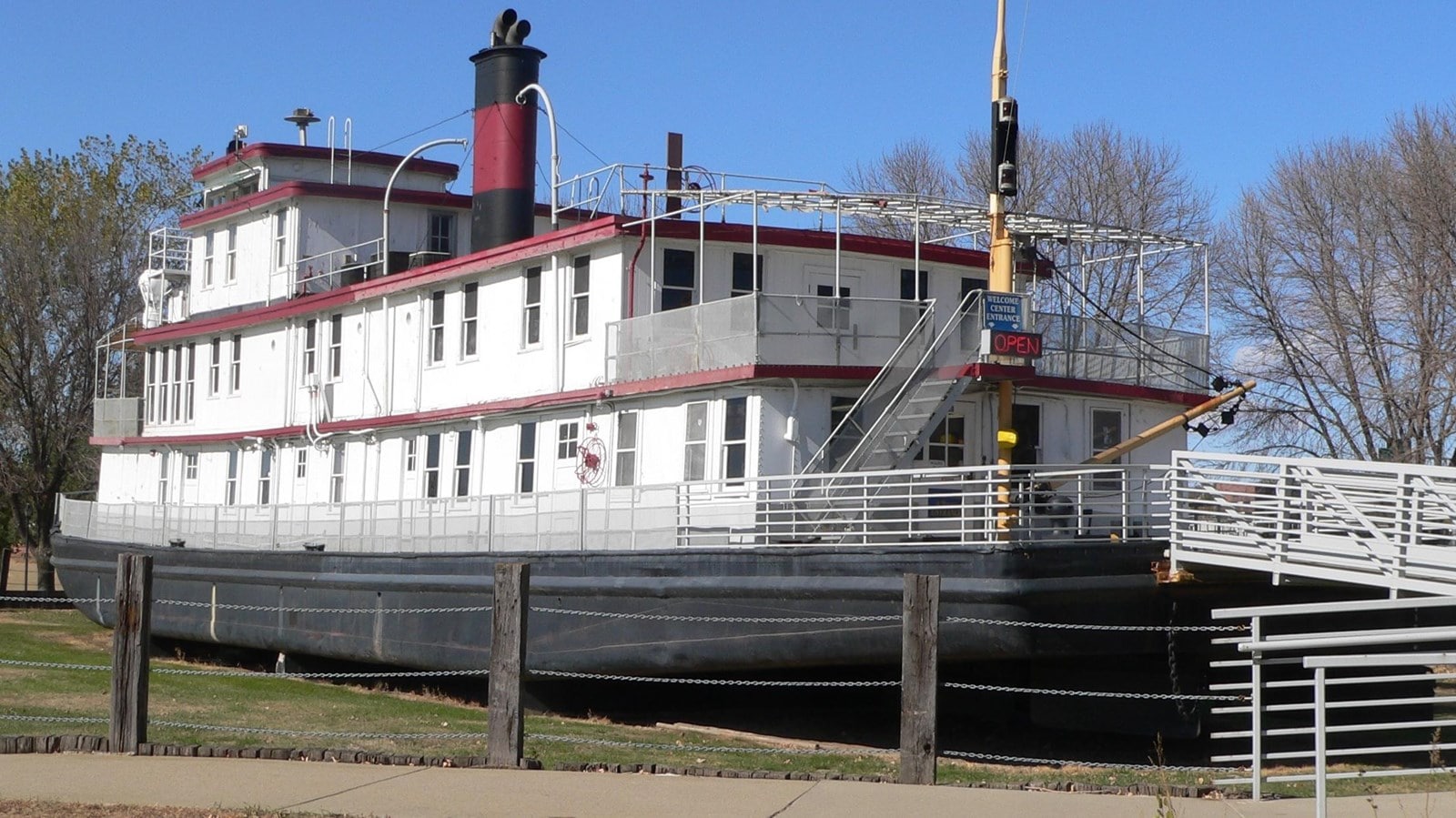
Lewis & Clark Monument Scenic Overlook
The Lewis and Clark Monument Scenic Overlook in Council Bluffs was dedicated in 1936. It honors the 1804 expedition of Lewis and Clark and their historic meeting with Otoe and Missouri Tribesmen.
The monument depicts an image of the meeting and has text stating “Beneath the bluffs on the Missouri, Lewis and Clark held parley with the Otoe and Missouri Indians and named the locality Council Bluffs.”
Visitors have the opportunity to see some stunning views of the Missouri River, Council Bluffs, and the Omaha skyline. Bring your camera if you go.
The overlook is also home to a popular mountain bike trail.
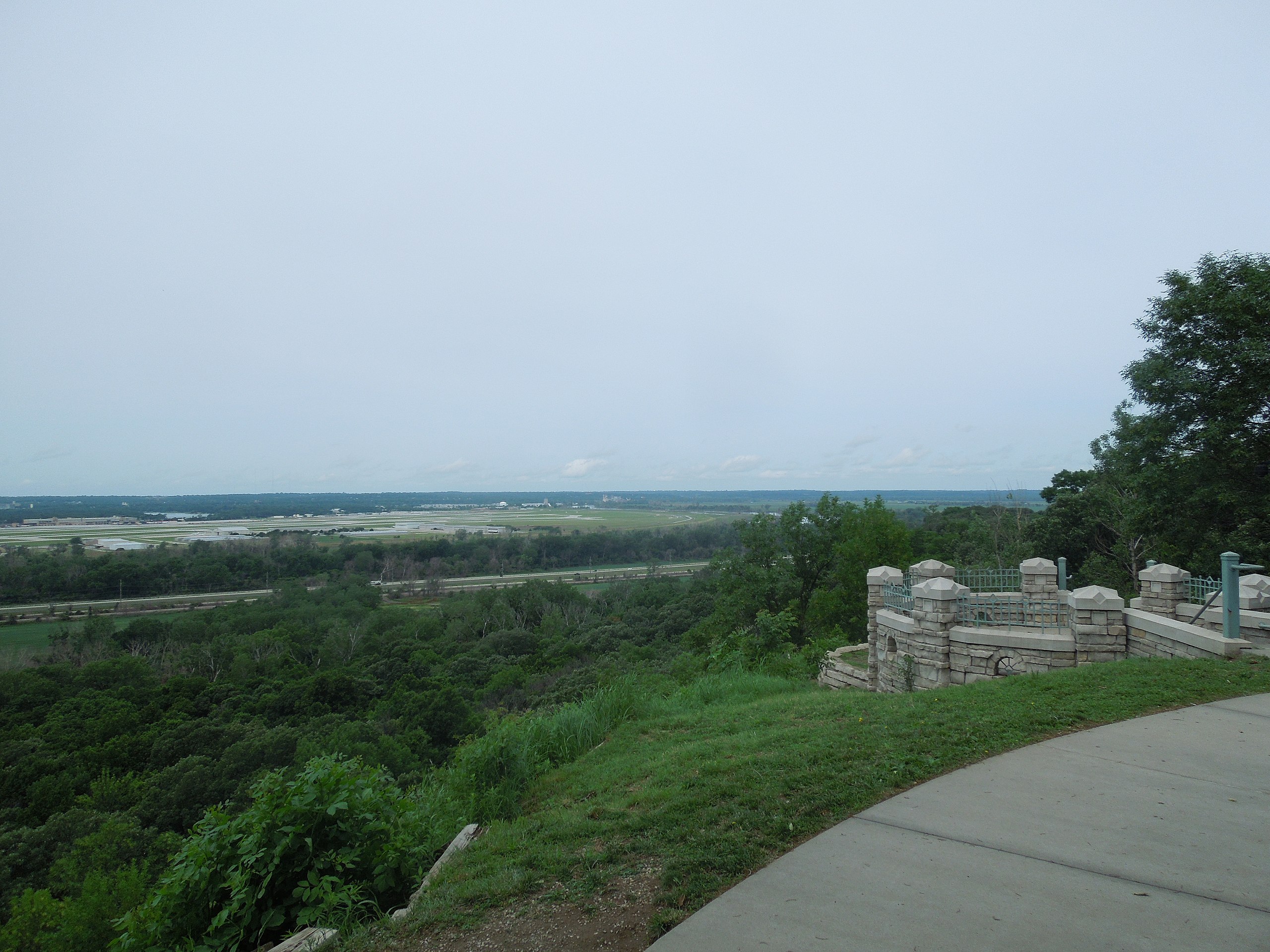
More Iowa National Parks
4. Mormon Pioneer National Historic Trail
Iowa National Parks are steeped in the story of the past. One great example of this is the Mormon Pioneer National Historic Trail.
The Mormon Pioneer National Historic Trail is a trail that commemorates the journey of the Mormon pioneers who traveled from Nauvoo, Illinois to the Salt Lake Valley in Utah, between 1846 and 1869.
The trail covers a distance of about 1,300 miles, passing through five states, including Illinois, Iowa, Nebraska, Wyoming, and Utah.
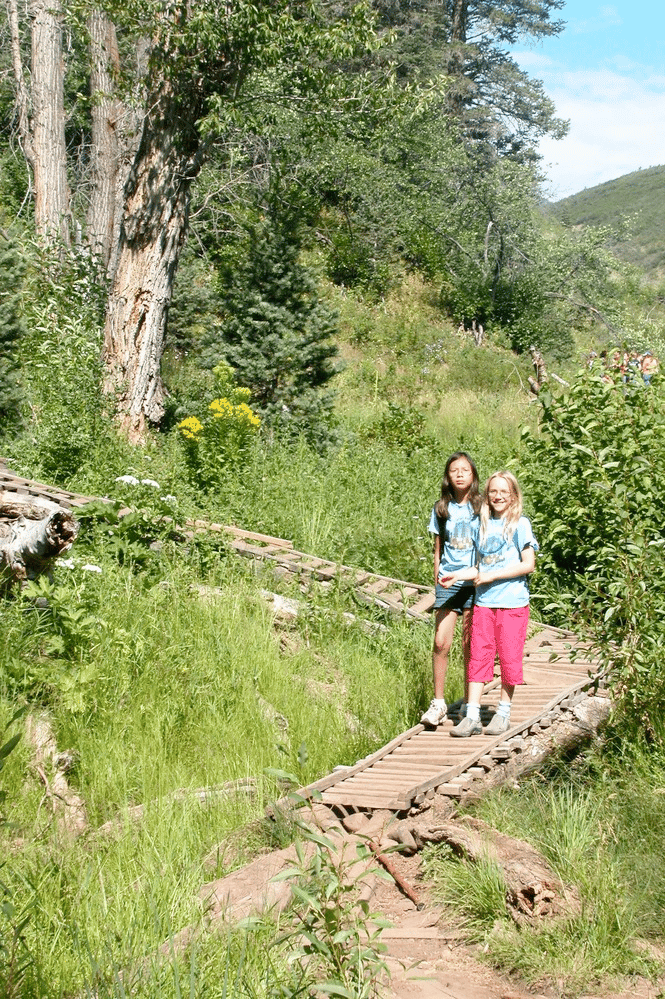
The Story Begins With The Church Of Jesus Christ of Latter-Day Saints
The history of the trail begins with the founding of the Church of Jesus Christ of Latter-day Saints in 1830. The Mormon pioneers, members of the church, were driven out of several states by persecution and violence and were seeking a new home where they could live and practice their religion in peace.
In 1846, under the leadership of Brigham Young, they began the journey westward, following the Oregon Trail to the Salt Lake Valley.
The trail was used by over 70,000 pioneers, who traveled in groups called “companies” led by appointed leaders called “captains” to their new home. They had to face many challenges such as harsh weather, lack of food, and hostile indigenous tribes. The journey took about four to six months, and many pioneers died along the way.
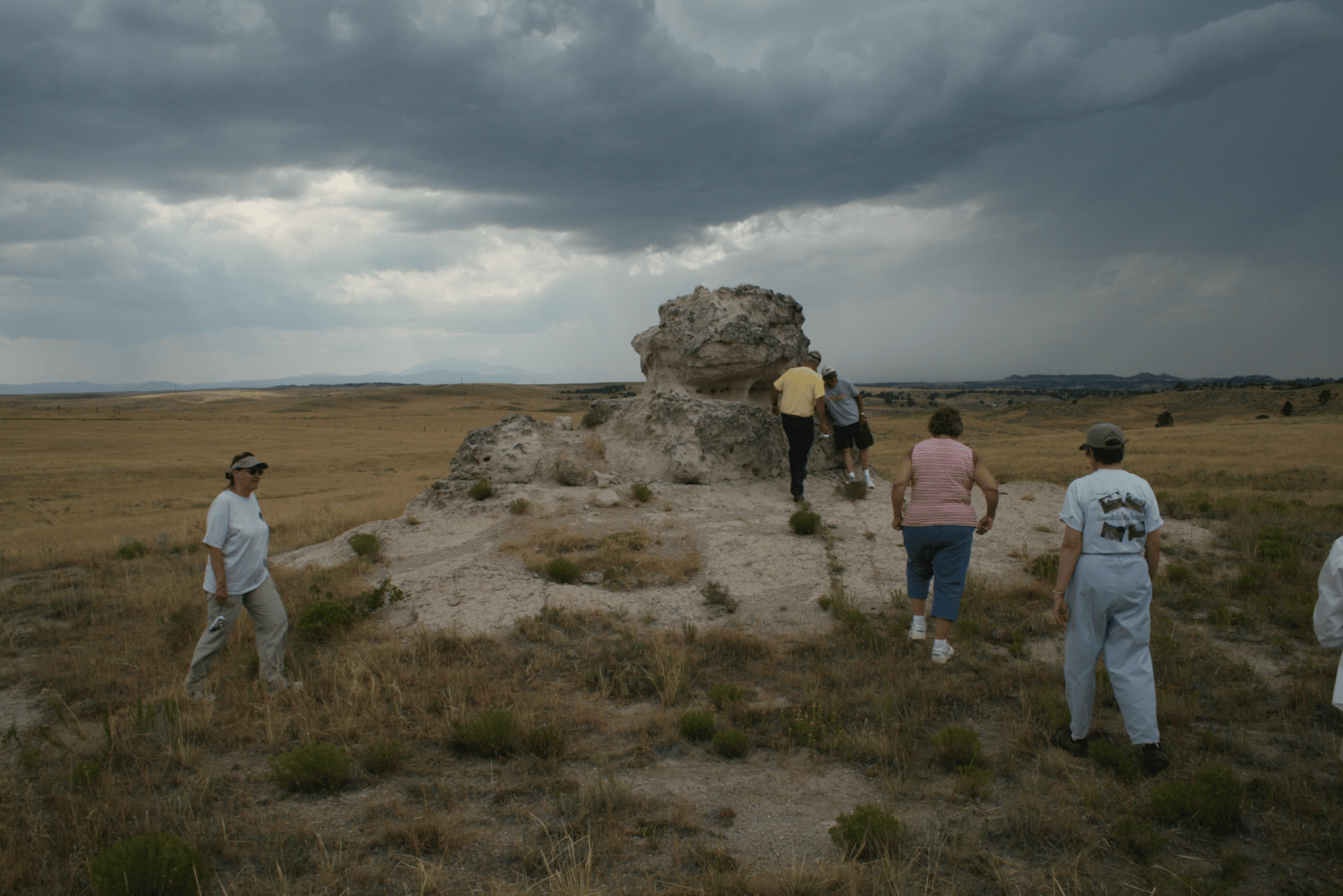
It Became A National Historic Trail
The trail was officially designated as a National Historic Trail in 1978. It is managed by the National Park Service, along with the Bureau of Land Management, and the U.S. Forest Service.
Today, the trail offers a glimpse into the history of the Mormon pioneers and their journey westward. Visitors can hike, bike or drive along the trail and see the historical sites, landmarks, and monuments that commemorate the journey of the pioneers.
These include trail ruts, wagon swales, and inscriptions on rock faces left by the pioneers, as well as interpretive centers and visitor centers. The trail is an important part of the American westward expansion history and offers a unique glimpse into the journey of the Mormon pioneers and their quest for religious freedom and a new home.
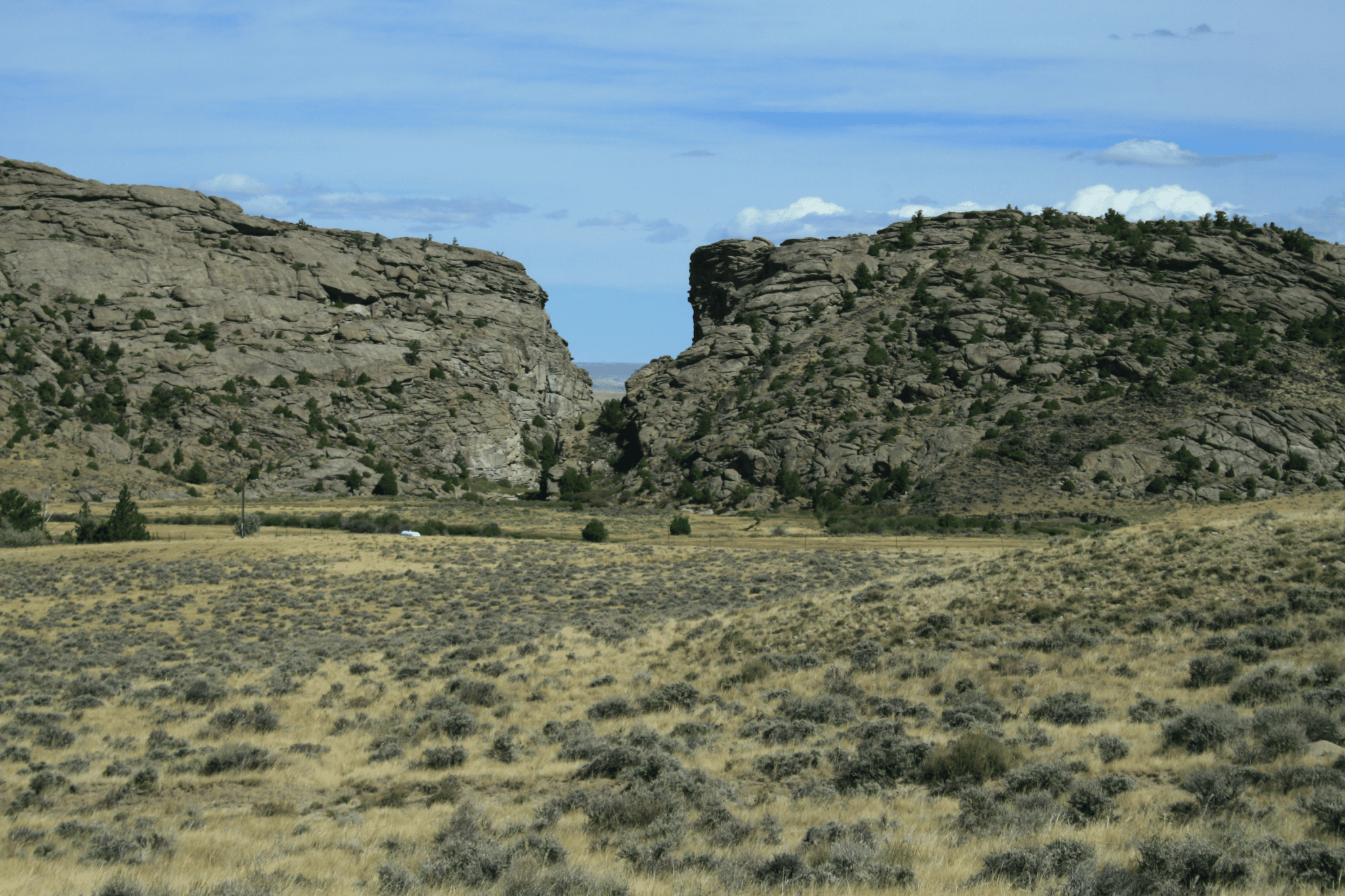
Explore The Route Taken By The Mormon Faithful
There are 24 historic sites or interpretive facilities on the Mormon Pioneer National Historic Trail in Iowa for you to visit. They include the following:
- Linger Longer Park
- Riverfront Park
- Sugar Creek
- Des Moines River Ford
- Bentonsport National Historic District
- Van Buren County Courthouse
- Richardson’s Point
- Davis County Historical Complex
- Drakesville Park
- Chariton River Crossing and Campsite
- Prairie Trails Museum of Wayne County
- Locust Creek Campsite
- Garden Grove Historic Site
- Clarke County Historical Museum
- Murray Trail Exhibits
- Seven-Mile Creek Campsite
- Mount Pisgah Historic Site
- Bank of Memories Museum
- Mormon Trail County Park and Lake
- The Pote Farm Ruts
- West Nishnabotna River Crossing
- The Grand Encampment
- Western Historic Trails Center
- Kanesville Tabernacle & Visitor Center

More Than Just Iowa’s National Parks
Iowa’s Field Of Dreams
Even though it’s not one of the Iowa National Parks, as a huge baseball fan I had to include this magical place. And I can do that because, after all, we’re More Than Just Parks!
One of the most highly anticipated games in Major League Baseball history took place on August 12, 2021. It was Major League Baseball’s Field of Dreams Game. It was the New York Yankees versus the Chicago White Sox. And the winners were anyone lucky enough to see it.
Step back in time, while you’re in Iowa, by visiting the Lansing Family Farm House in Dyersville. There’s a 30-minute guided tour. You can learn about the history of the Lansing family homestead and how it became the set for the Kinsella family in the 1989 fantasy classic Field of Dreams.
And, while you’re there, maybe you could have a game of catch?
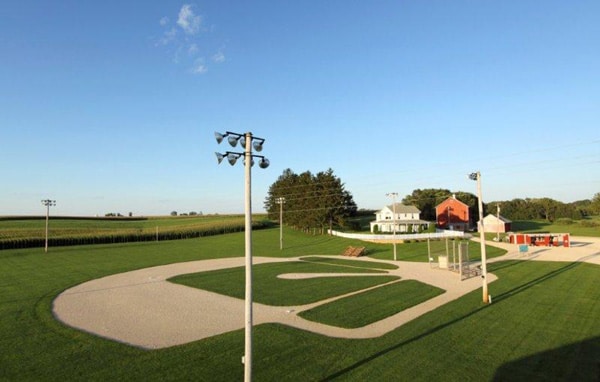
Some Fun Facts About Field Of Dreams
Field of Dreams debuted in 1989. For many it has become one of the greatest, if not the greatest, film about the power of sports to shape peoples lives.
Somehow no one knows just who played the famous unseen voice that tells Ray, “If you build it, he will come.” Some believe it’s Costner and others think it was Ray Liotta, who played Shoeless Joe Jackson. Kinsella said he was told it’s actor Ed Harris, the husband of Amy Madigan, who played Annie Kinsella.
Following Ray Kinsella’s lead, Kevin Costner built his own field of dreams. He has one located on his ranch in Aspen, Colo., and it comes complete with stadium lights, a pitching machine and a sound system. (Source: Michael Clair, Major League Baseball)
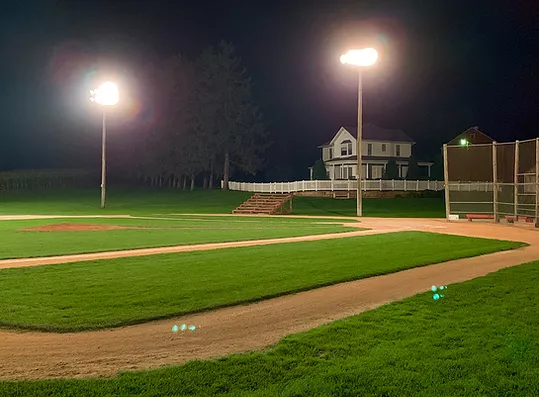
Detour To Dyersville
If you’re planning to visit Iowa then it’s well worth making a detour to Dyersville to see this iconic place and feel some of its magic.
Did you know that the film was based on a book titled Shoeless Joe? The book was first published in 1982 and it took seven years to bring it to the big screen.
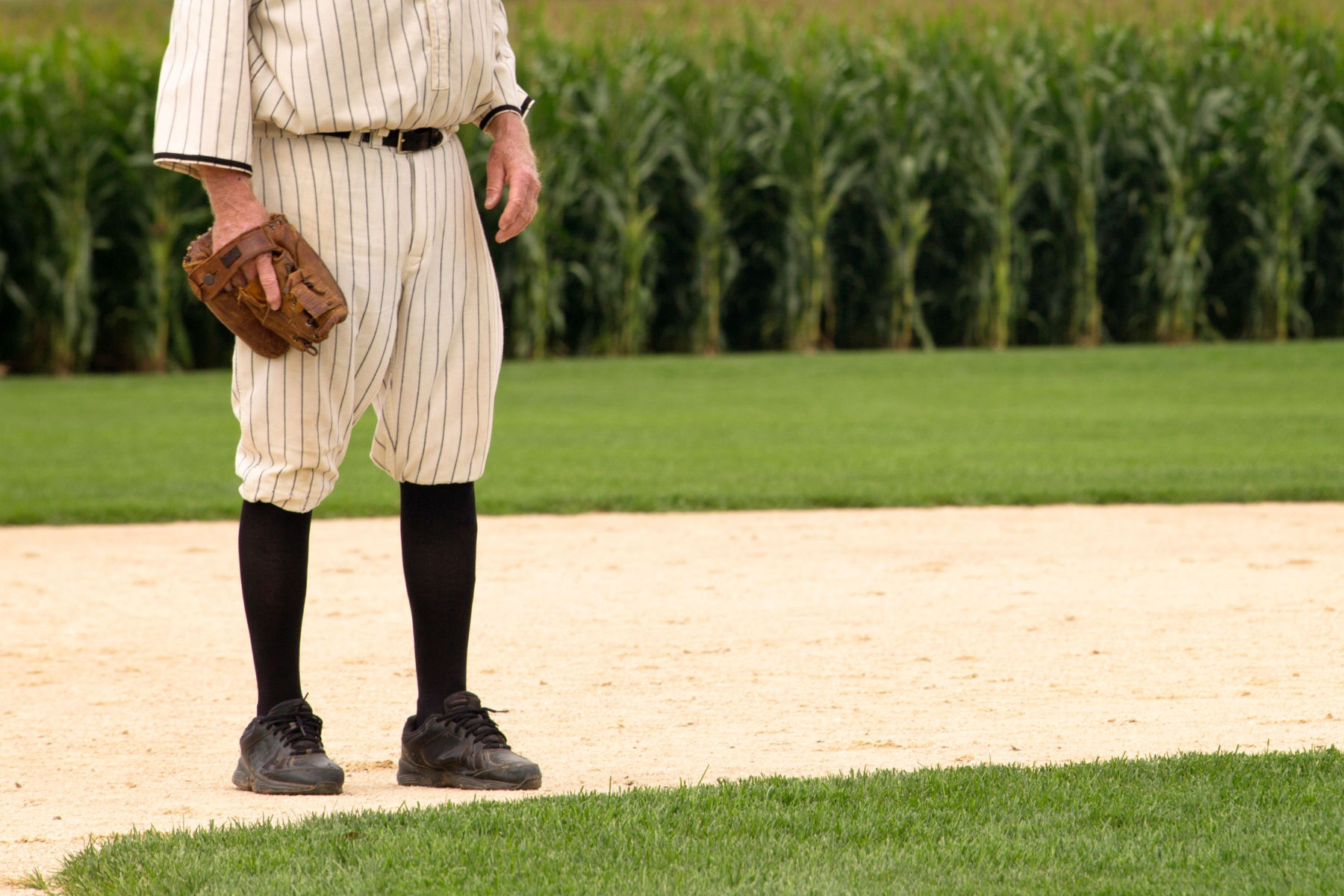
How Ray Kinsella Got His Name
The author of the book was W.P. Kinsella who insists that he did not name the lead character, Ray, after himself. He named the film’s lead after a character in a J.D. Salinger story titled A Young Girl in 1941 With No Waist at All.
You’ll Never Believe Who Two Of The Film’s Extras Were
Believe it or not, two of the extras working in the film were Matt Damon and Ben Affleck who were 17 and 16 respectively. They went on to write a screenplay which became a hit film that featured both of the actors. It was titled Good Will Hunting.
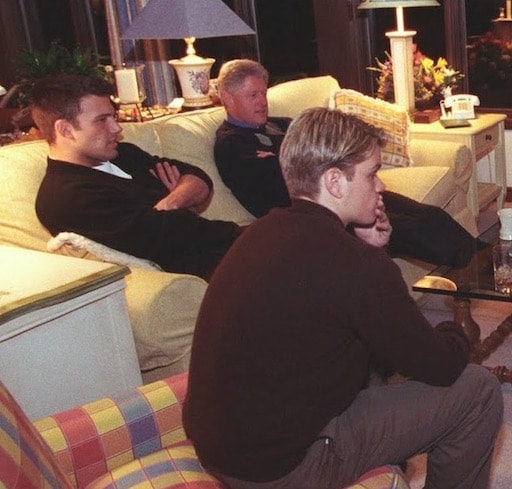
Moonlight Graham
Archibald Moonlight Graham was actually a real person. His lone major league game took place in June of 1905, not on the last day of the 1922 season as is depicted in the film. The author found his name in an actual baseball encyclopedia.
The first choice to play Moonlight Graham was not Burt Lancaster. Jimmy Stewart was the first choice to play the role. This is ironic because Field of Dreams is often compared to Stewart’s It’s A Wonderful Life.
RELATED: Look Familiar? 25+ CLASSIC Movies Filmed In The National Parks
Check Out Our River Of No Return Film
In the heart of Idaho lies America’s largest (and most breathtaking) contiguous Wilderness area outside of Alaska, The Frank Church – River of No Return Wilderness.
Steep canyons, pristine forests, untouched Wilderness, incredible wildlife, and world-class whitewater rafting comprise this epic 2.3 million acre road-less area.
This film was shot in the heart of the remote Frank Church River of No Return Wilderness on one of America’s premiere Wild & Scenic Rivers, the middle fork of the Salmon.
This short film highlights the unique, rugged beauty of the Middle Fork of the Salmon River and explains the delicate balance between visitors and the wilderness.
Iowa National Parks FAQ
Iowa is one of the nation’s more affordable locations, with overall living costs at around 90% of the U.S. average and housing costs at just 75% of the U.S. average. Here, you will get more house for your dollar, too. In fact, 71% of residents own their own home.
The following is a list of the must-see historic sites in Iowa:
Field Of Dreams
Herbert Hoover National Historic Site
Mormon Pioneer National Historic Trail
Effigy Mounds National Monument
Lewis & Clark National Historic Trail
Farm House Museum
Historic General Dodge House
Buffalo Bill Museum
Mines of Spain Recreation Area
Sergeant Floyd Monument & Towboat
Why Trust Us About Iowa National Parks?
We’re Jim Pattiz and Will Pattiz, collectively known as the Pattiz Brothers (and sometimes the Parks Brothers) and we absolutely LOVE the national parks.
You should probably know that we don’t just make this stuff up out of thin air. We’ve spent our entire adult lives exploring and filming America’s national parks and public lands.
We’ve worked with the National Park Service, the Department of Interior, USDA, and the U.S. Forest Service for years creating films on important places and issues. Our work has been featured in leading publications all over the world and even some people outside of our immediate family call us experts on the national parks.
Meet The Parks Brothers
Map Of Iowa National Park Sites
List Of Iowa National Park Sites
- Effigy Mounds National Monument
- Herbert Hoover National Historic Site
- Lewis & Clark National Historic Trail
- Mormon Pioneer National Historic Trail
We Hope You’ll Follow Our Journey
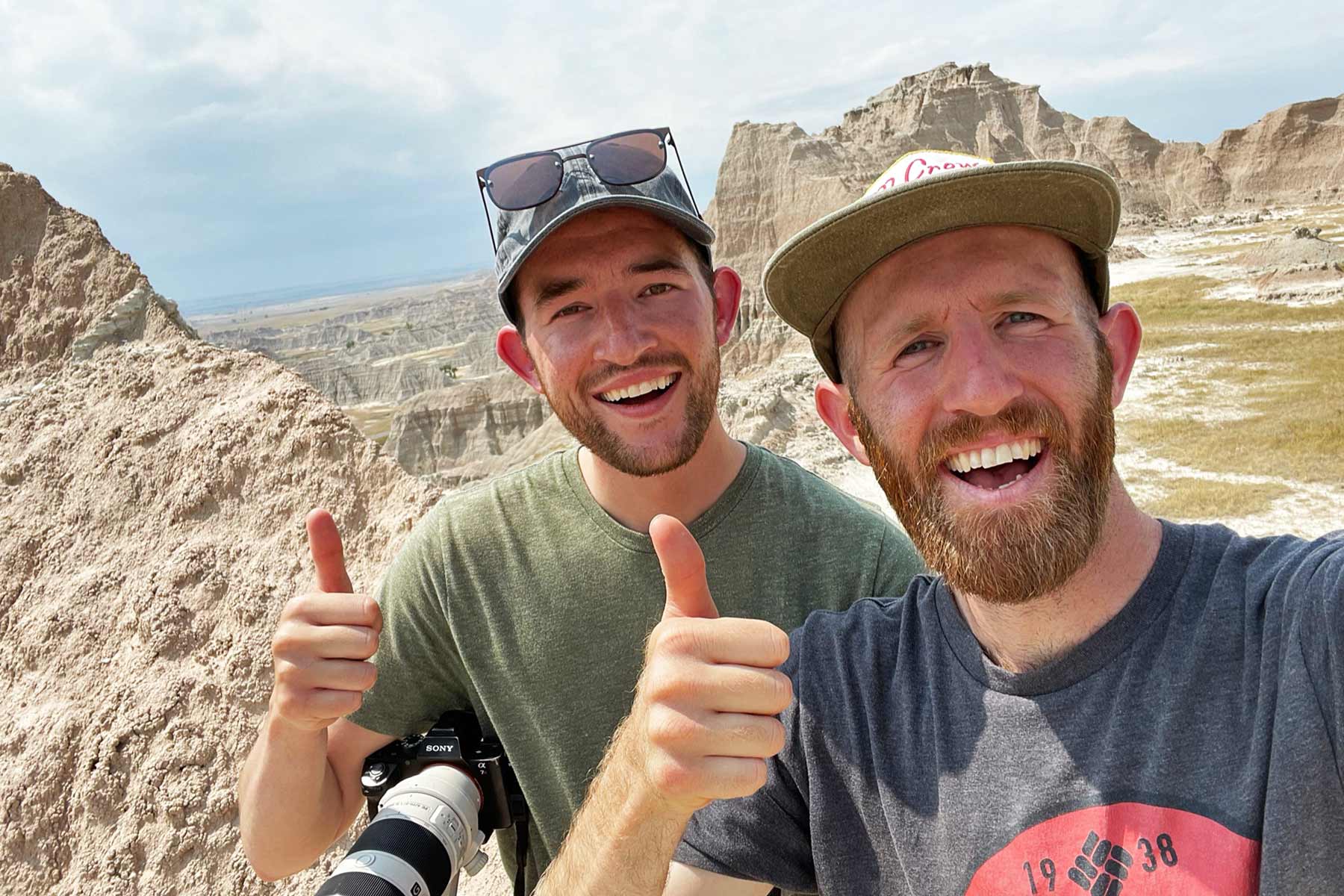
Our goal here at More Than Just Parks is to share the beauty of America’s national parks and public lands through stunning short films in an effort to get Americans and the world to see the true value in land conservation.
We hope you’ll follow our journey through the parks and help us to keep them the incredible places that they are. If you’re interested in joining the adventure then please sign up below!
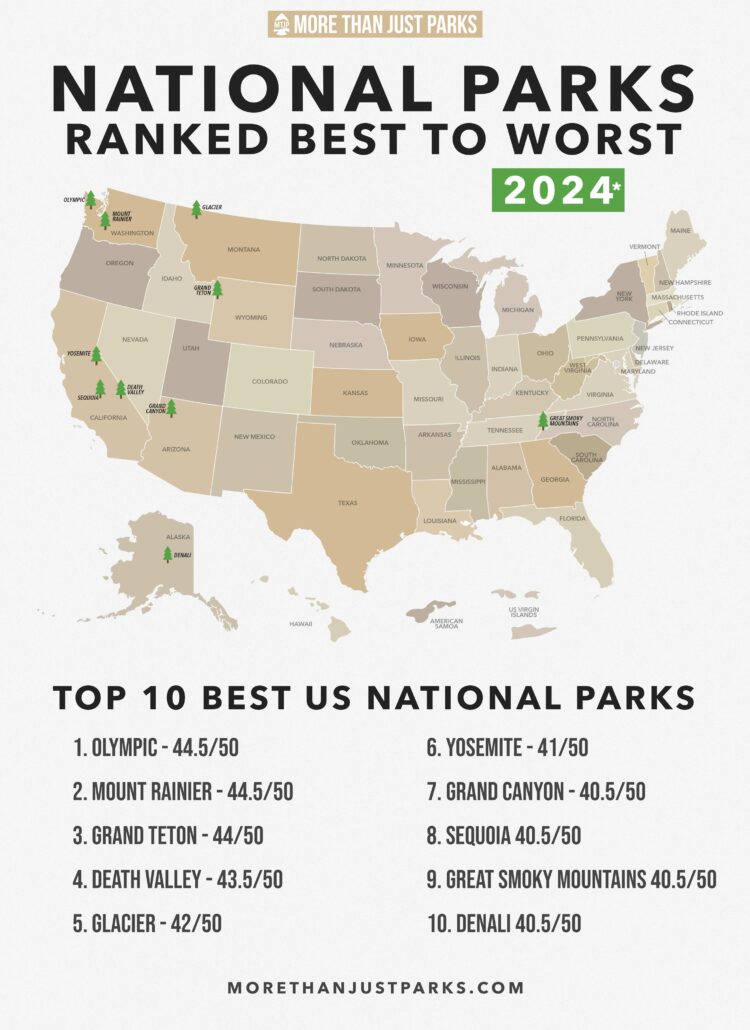
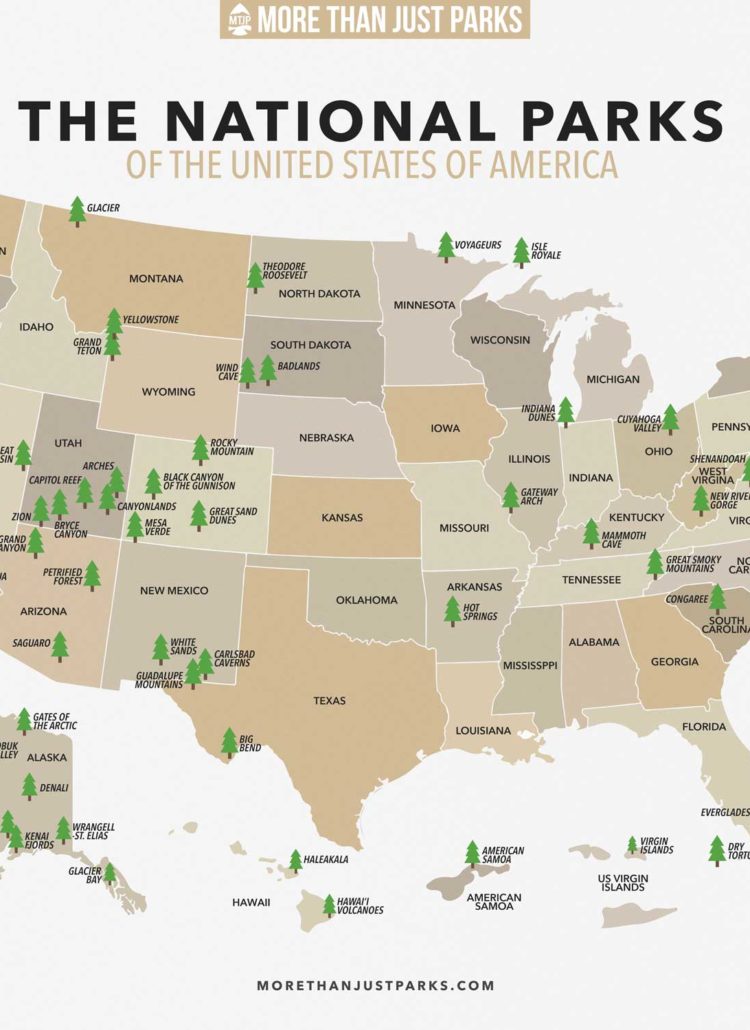
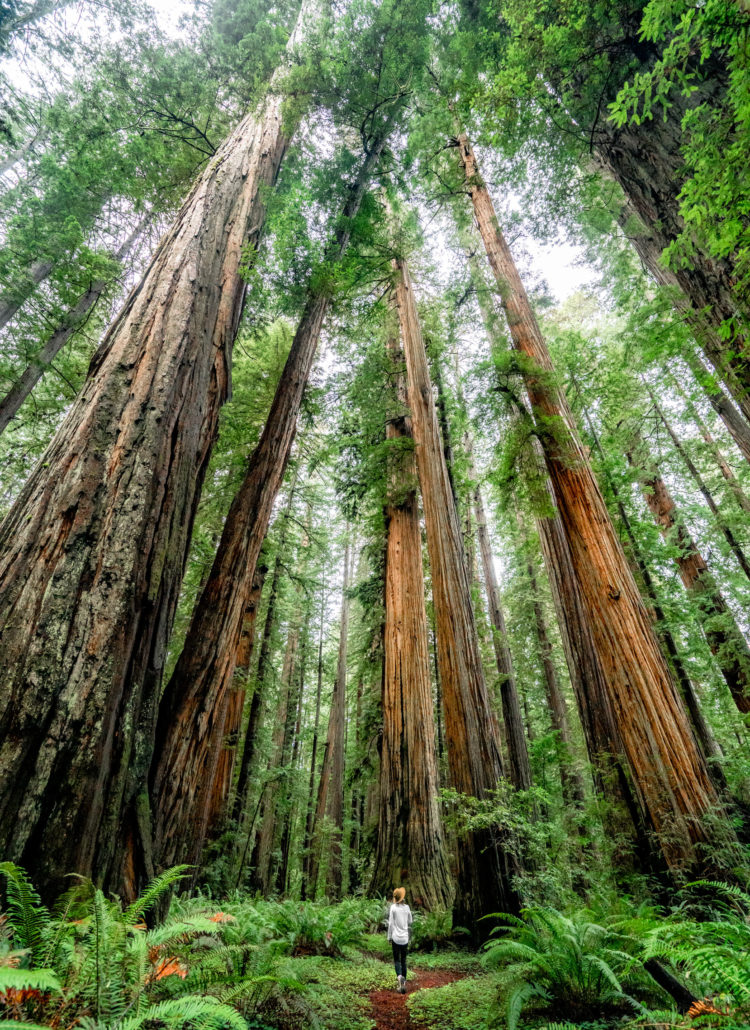
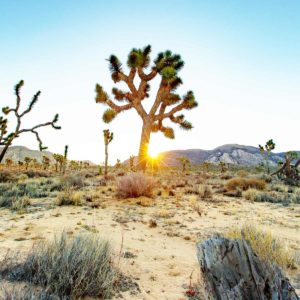
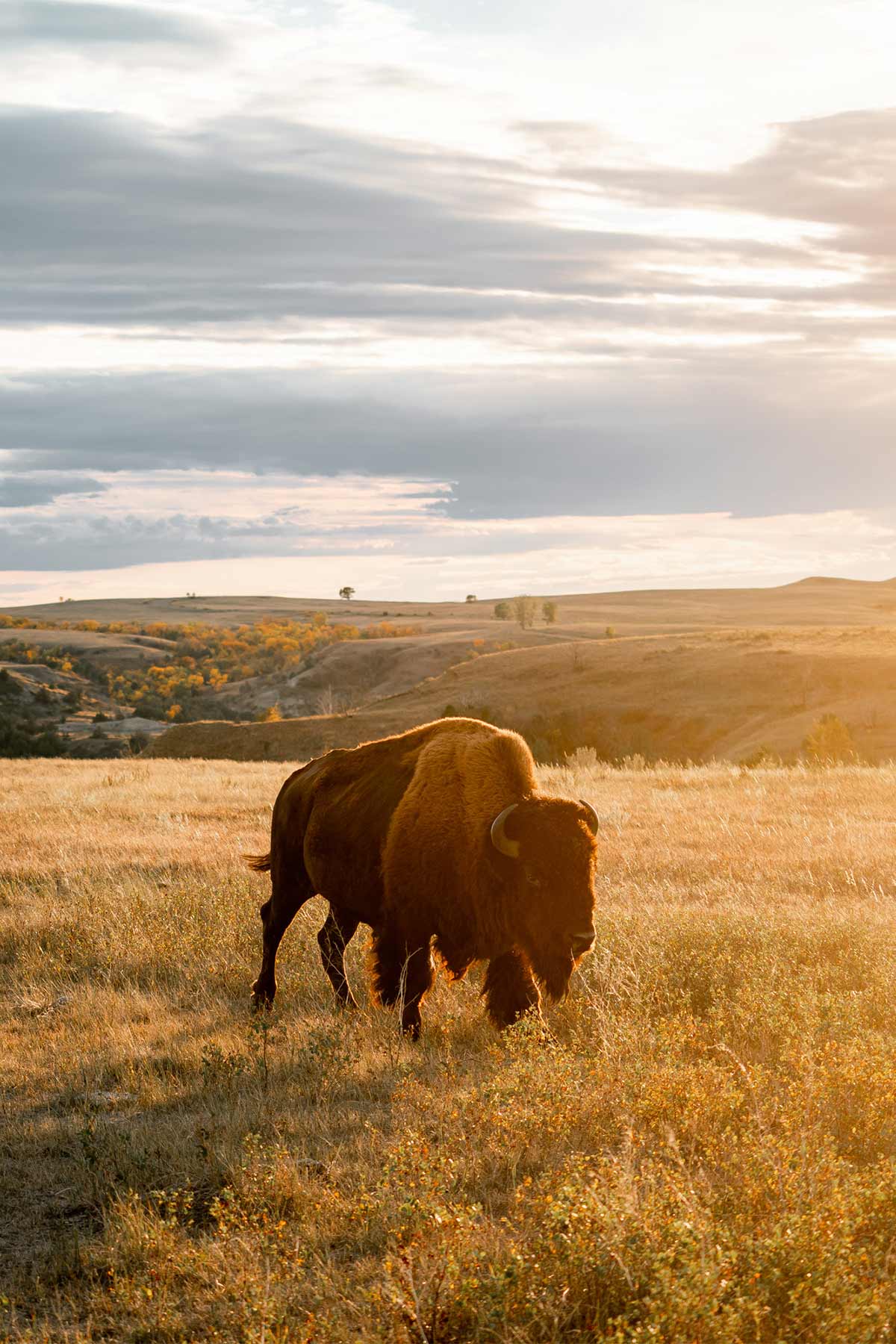
Leave a Reply